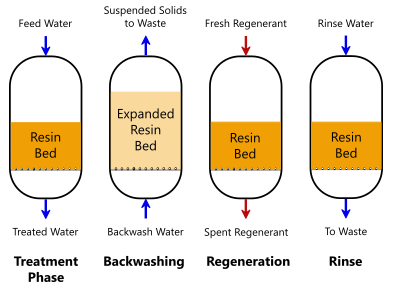Ingenious PFAS Therapy Solutions for Safer Water
The enhancing frequency of PFAS contamination in water products necessitates an important exam of innovative treatment services. Furthermore, arising bioremediation methods supply a more sustainable method to dealing with PFAS difficulties. pfas management.
Review of PFAS Contamination
PFAS contamination has emerged as a substantial ecological and public health issue. Per- and polyfluoroalkyl compounds (PFAS) are a team of artificial chemicals recognized for their perseverance in the setting and body, leading them to be commonly referred to as "forever chemicals." These compounds have been commonly made use of in numerous markets, including firefighting foams, water-repellent fabrics, and food packaging, primarily due to their water- and grease-resistant buildings.
The prevalent usage of PFAS has actually resulted in their detection in soil, water products, and even in the blood of people and animals. Researches have linked PFAS exposure to numerous wellness problems, including developmental results in infants, body immune system disorder, and different types of cancer. In addition, the environmental determination of these compounds complicates their degradation and removal, elevating problems concerning long-term ecological influences.
Regulatory bodies are increasingly executing strict standards to check and decrease PFAS levels in alcohol consumption water and various other ecological tools. As awareness of PFAS contamination grows, it has come to be essential for neighborhoods and sectors to seek reliable treatment options to alleviate exposure and secure public health.
Advanced Purification Technologies
As the urgency to attend to PFAS contamination escalates, progressed filtering technologies have become a crucial element in the remediation efforts focused on eliminating these consistent chemicals from water resources. These modern technologies take advantage of advanced devices to efficiently target and record PFAS compounds, which are notoriously resistant to traditional therapy techniques.
One of one of the most promising techniques is the usage of granular triggered carbon (GAC), which adsorbs PFAS particles because of its high area and porous structure. This method has actually been widely executed in both local and industrial setups, showing significant decreases in PFAS focus. Furthermore, ion exchange resins have gained grip, specifically developed to uniquely bind PFAS ions from water, therefore promoting their elimination.
Membrane layer purification innovations, such as reverse osmosis and nanofiltration, also reveal effectiveness in PFAS elimination by literally separating contaminants from water - pfas management. These systems can accomplish high levels of purity, making them ideal for drinking water applications
Chemical Therapy Advancements
Various chemical therapy developments are being discovered to effectively deal with PFAS contamination in water products. One encouraging technique entails making use of advanced oxidation procedures (AOPs), which make use of powerful oxidants such as ozone, hydrogen peroxide, or chlorine dioxide integrated with UV light to break down PFAS compounds right into less harmful compounds. This method has demonstrated effectiveness in research laboratory setups, showing potential for scalability in real-world applications.
An additional cutting-edge strategy is the development of ion-exchange resins specifically designed to target PFAS. These resins can selectively adsorb PFAS compounds from water, permitting for their elimination throughout treatment procedures. Current developments have actually boosted the effectiveness and capability of these materials, making them a beneficial option for water therapy facilities.
Additionally, scientists are investigating making use of chemical representatives like persulfate and ferrous ions to enhance the destruction of PFAS in polluted water. These representatives can cause chemical reactions that assist in the break down of relentless PFAS compounds.
Arising Bioremediation Methods
Current improvements in chemical treatment advancements have actually led the way for exploring bioremediation methods as a sensible choice for resolving PFAS contamination. Bioremediation utilizes the all-natural metabolic processes of microorganisms to weaken or transform contaminants, making it an attractive technique for taking on consistent important link pollutants like PFAS.
Arising techniques in bioremediation include making use of genetically crafted bacteria that can especially target and damage down PFAS substances. These microbial pressures are being developed for their enhanced deterioration abilities, raising the effectiveness of the remediation process. Furthermore, researchers are exploring the possibility of plant-assisted bioremediation, where particular plant species may uptake and withdraw PFAS from contaminated dirt and water.
Another encouraging method is the application of bioaugmentation, which entails introducing beneficial microbes into polluted settings to boost the degradation of PFAS. This approach can assist in quicker removal timelines and improve total performance.

Regulatory Frameworks and Specifications
An extensive regulatory framework is essential for properly managing PFAS contamination and making sure public health and wellness security. The enhancing acknowledgment of per- and polyfluoroalkyl substances (PFAS) as environmental contaminants has triggered various federal and state firms to establish requirements that govern their presence in water supplies. The United State Environmental Protection Agency (EPA) has actually developed health advisories and is pursuing establishing enforceable limits for PFAS in drinking water.
State-level guidelines differ significantly, with some states taking on more stringent guidelines than those suggested by the EPA. These laws frequently include optimum pollutant levels (MCLs) for certain PFAS compounds, tracking requirements, and reporting obligations for water energies. Furthermore, arising structures concentrate on the removal of contaminated websites, stressing the requirement for efficient treatment technologies.

Conclusion
Finally, the advancement and implementation of cutting-edge PFAS treatment services are vital for resolving the prevalent issue of water contamination. Advanced purification technologies, chemical treatments, and emerging bioremediation techniques jointly offer a multifaceted technique to efficiently reduce and degrade PFAS levels. As governing structures continue to evolve, incorporating these technologies will be necessary to safeguard public health and wellness and restore the honesty of contaminated water resources, ultimately adding to a cleaner and safer i thought about this atmosphere.